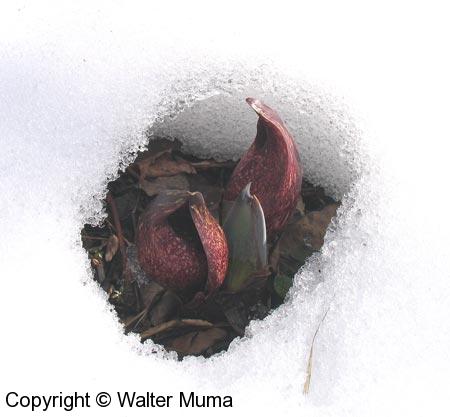
|
 |
Skunk Cabbage plants literally melt the snow away from around them. Books state that they can maintain a temperature of 70F in their immediate vicinity! |
|
 |
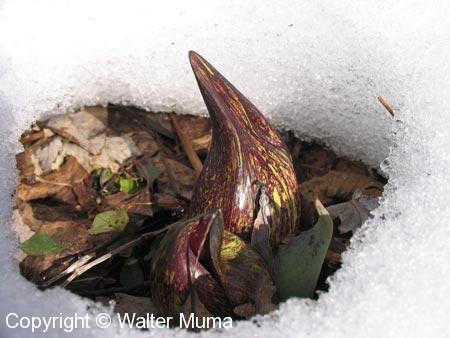
|
 |
Note the circle of melted snow around this plant. In southern Ontario these plants usually bloom around the last week of March. |
|
 |
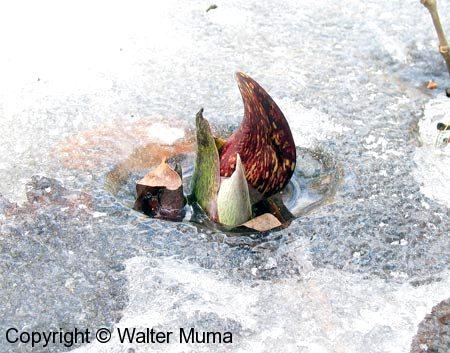
|
 |
And they can withstand being re-frozen into the ice, as we see here. |
|
 |
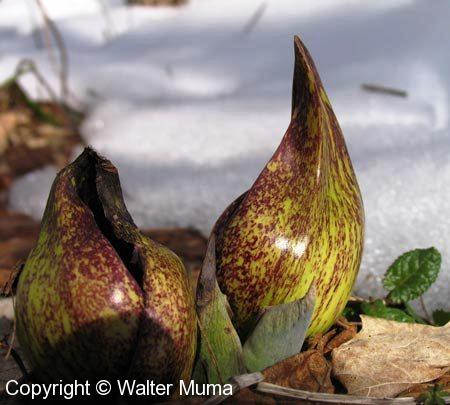
|
 |
This is the Skunk Cabbage flower. They are very unusual flowers, and come in a variety of colours. |
|
 |
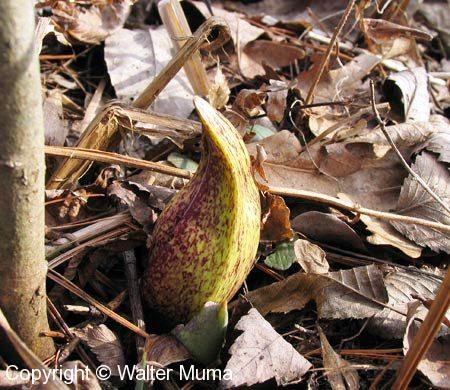
|
 |
This one is a bit lighter. Skunk Cabbage usually grows in very wet areas. However, this one is in a bit of a drier place. |
|
 |
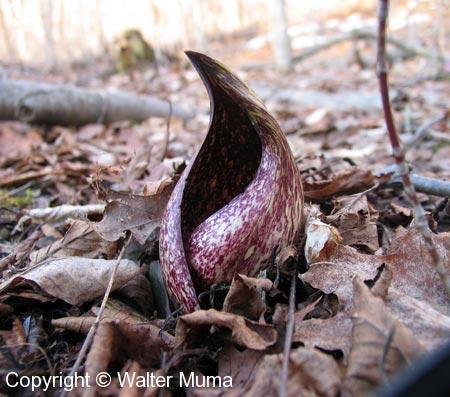
|
 |
And a darker coloured flower. This outer shell is referred to as a "spathe". |
|
 |
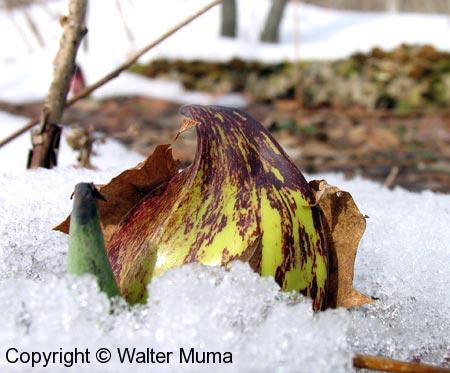
|
 |
A more squat shape. |
|
 |
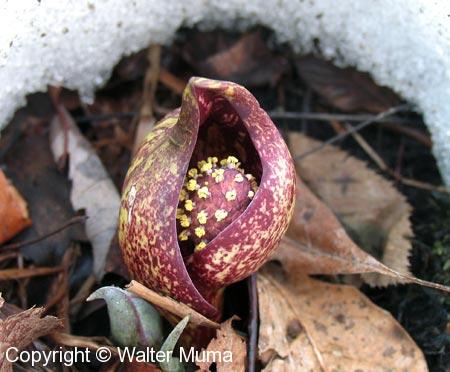
|
 |
Inside the flower body is what's called the "spadix". This is where the actual individual flowers are located, with pollen. |
|
 |
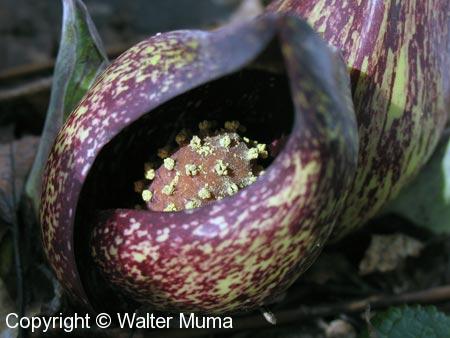
|
 |
Another view. |
|
 |
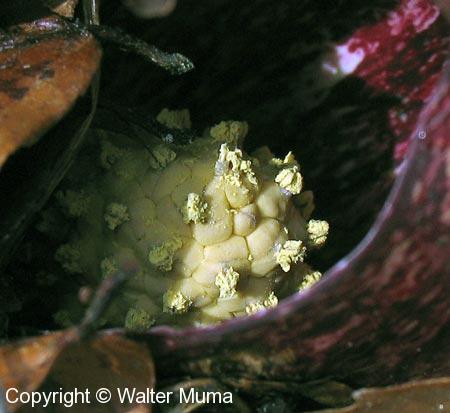
|
 |
And a closeup view of the spadix. Note the pollen grains. |
|
 |
|
|
 |
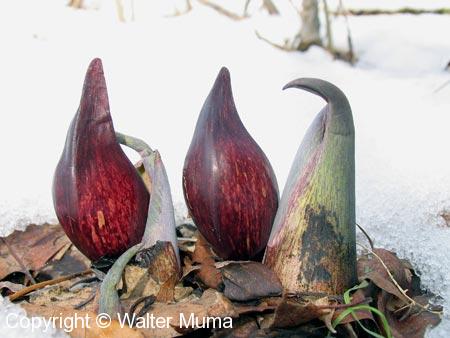
|
 |
Beside the flowers are the leaf buds. Both the leaf and flower buds are actually fully formed the previous fall. |
|
 |
|
|
 |
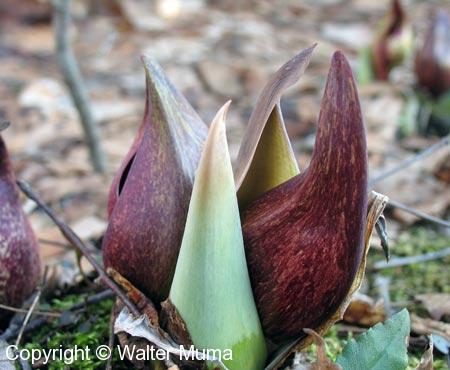
|
 |
The leaf bud is the light green spike. The flowers are the dark coloured bodies. |
|
 |
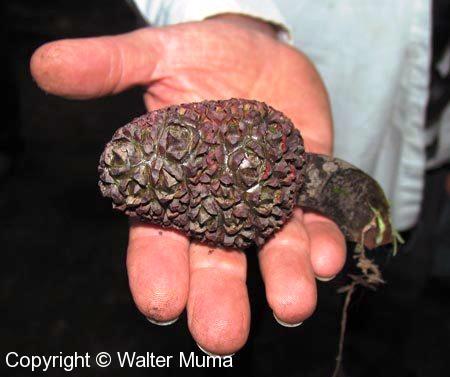
|
 |
Seeds, at the end of August. |
|
 |
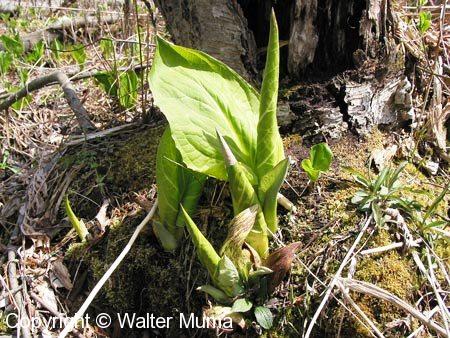
|
 |
The flowers come out first, then the leaves follow, later. |
|
 |
|
|
 |
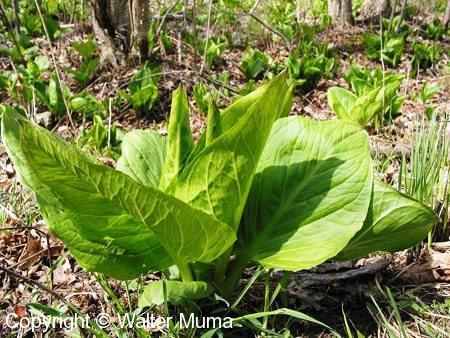
|
 |
The leaves are large and very green. They are what gives this plant its name, as they are very odiferous. When crushed they small like very powerful onions with a scent of skunk mixed in. |
|
 |
|
|
 |
|
|
 |
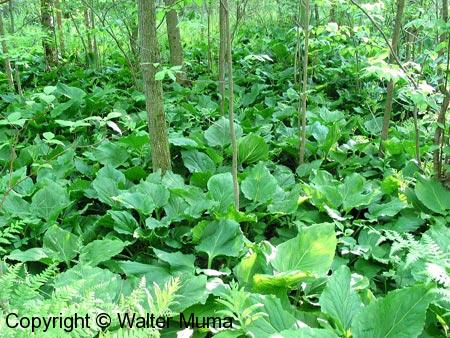
|
 |
Skunk Cabbage plants often grow closely packed in an area. However, this doesn't stop other plants from growing alongside them, as the leaves are usually gone by summer. |
|
 |
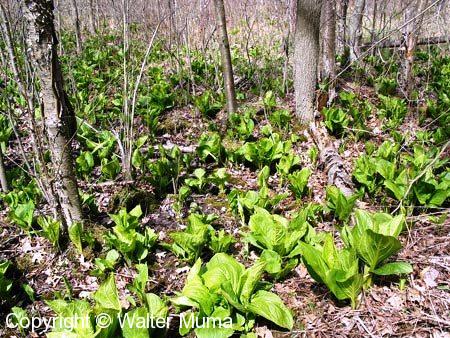
|
 |
At the end of April. |
|
 |
|
|
 |
 |